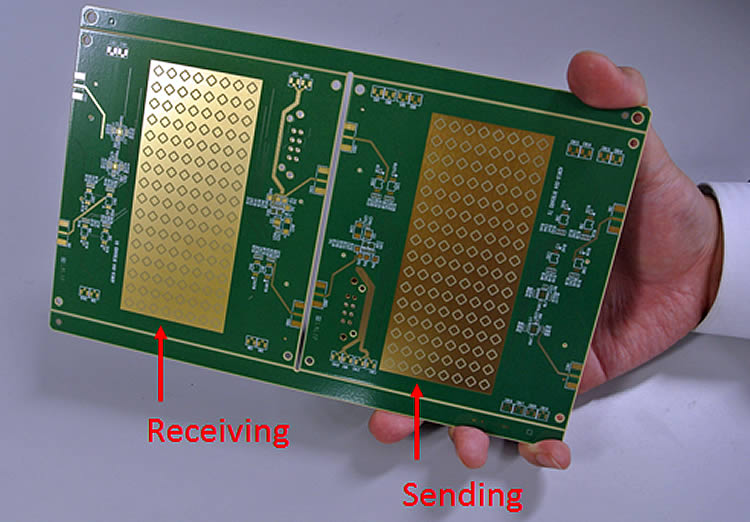
Photo: The antenna panel developed by Fujitsu
Fujitsu has just made what could be a major breakthrough, creating the world’s first single-panel antenna that simultaneously allows communications to four users over 5G (using the 28GHz band).
It can offer speeds of over 10Gbps in total (so 2.5Gbps per user) which is in line with the requirements of 5G, and due to using just a single-panel antenna rather than one per user it does this in the world’s most compact structure, coming in at just 13cm squared.
That in turn will help allow for very compact base stations, which is important because 5G infrastructure will require lots of small cells packed close together, particularly in built up areas.
Current mobile infrastructure can have larger cells spread further apart and with support for more users, so fewer of them are needed.
However, 5G radio waves are more easily blocked by obstacles like buildings, so a greater number of base stations is required to overcome that. And as so many are needed it’s important that they’re as small as possible, which is why this development by Fujitsu is so important. The small size of these base stations should also help make them energy efficient.
Less interference, fewer antennas
Fujitsu explains that typically 5G system structures need one antenna panel for each terminal when simultaneously transmitting to multiple terminals. But Fujitsu has managed to accurately control the angle of signals separately emitted from 128 antenna elements, thereby suppressing the interference between signals and enabling simultaneous communications in four directions with a single antenna panel.
This should be particularly useful for 5G infrastructure in congested areas, such as stadiums and airports, where numerous small cells can be dotted around.
The technology isn’t ready for commercialisation yet, but Fujitsu hopes to reach that point by around 2021. That’s a bit later than some companies will start building their 5G networks. The likes of O2 have already started installing small cells in the UK, and EE, BT, Three and Vodafone all plan to launch 5G networks from 2019.
Still, it will take a long time to provide UK-wide coverage – the UK government’s own target for widespread coverage is 2027 - and this technology could come in handy when expanding their networks.
Useful read:





